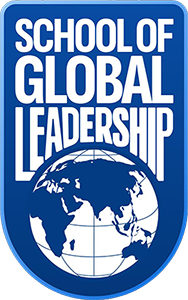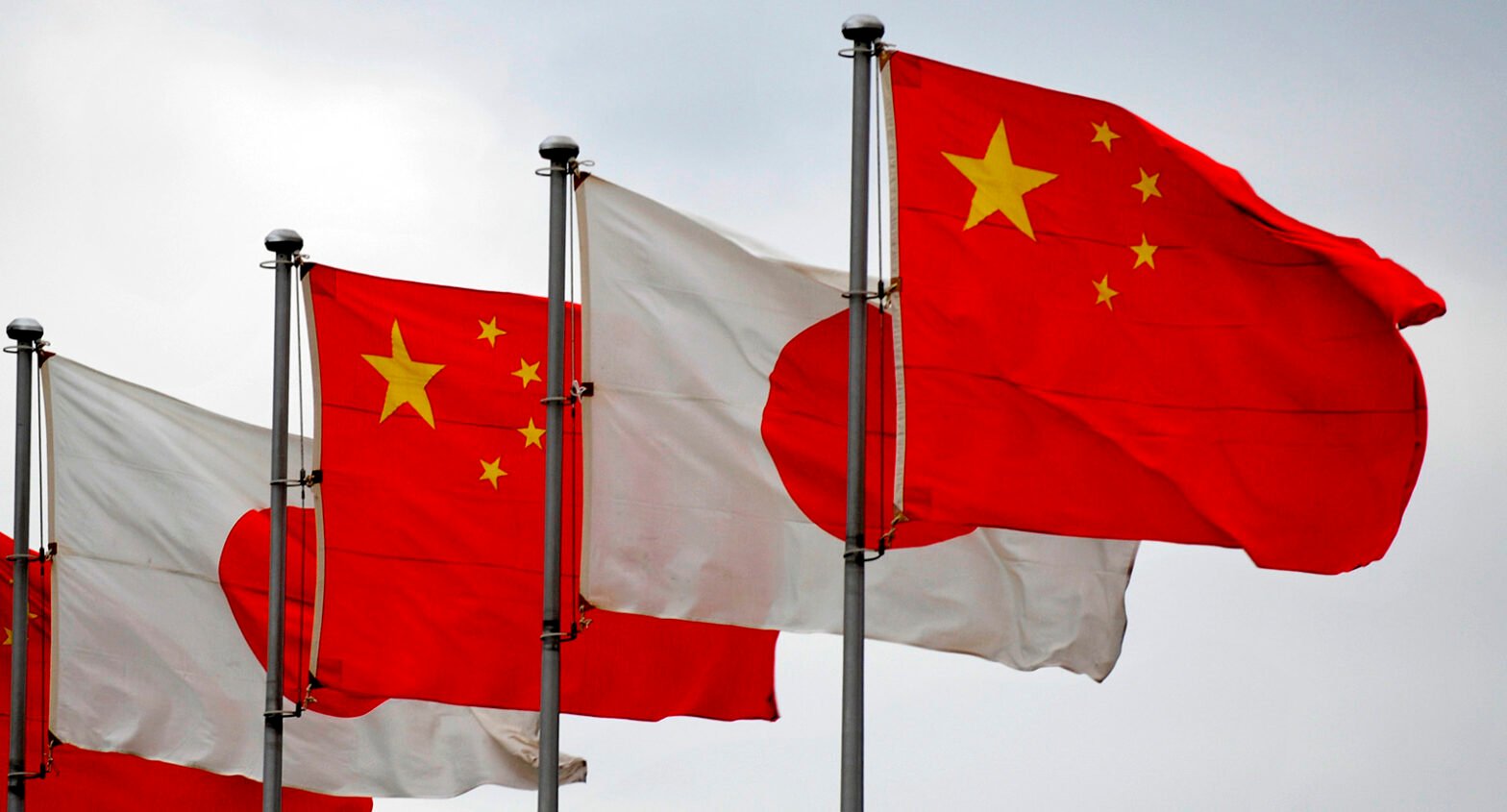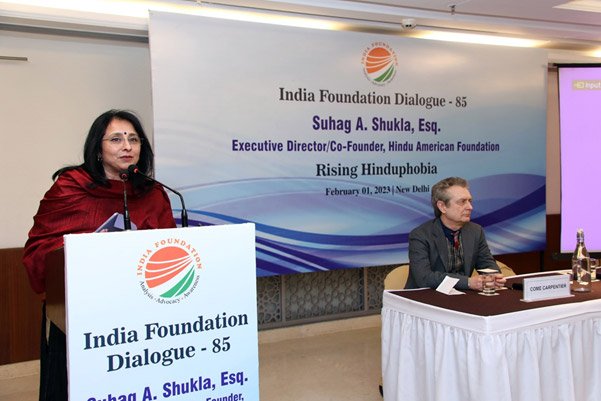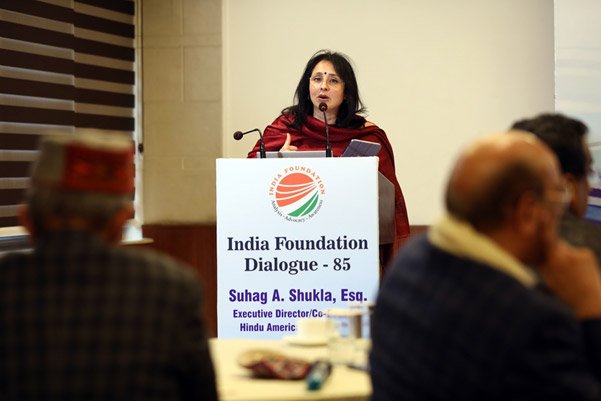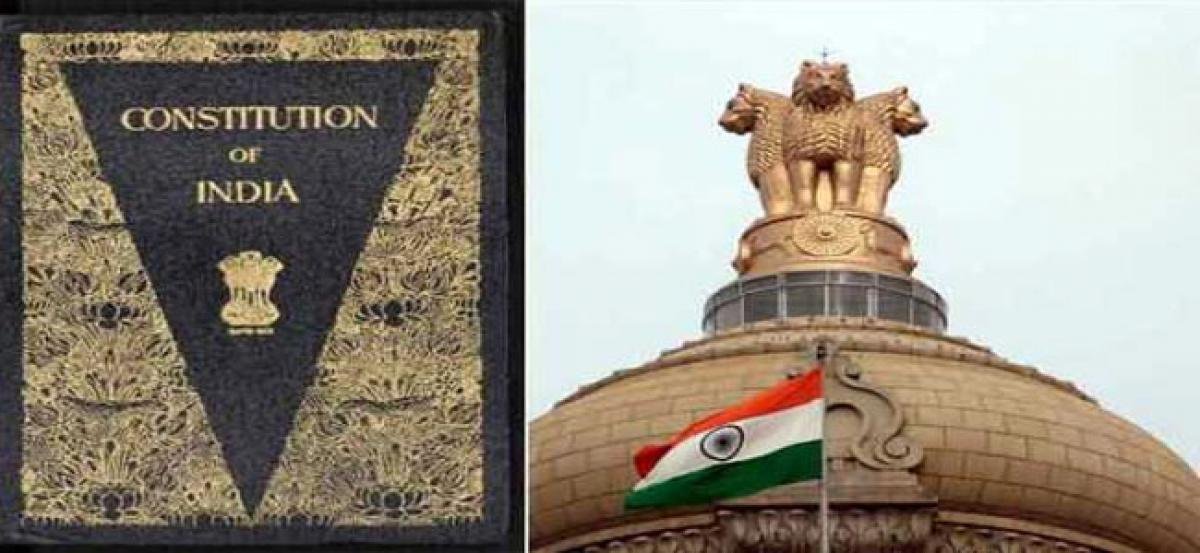We are witnessing a moment where humanity has reached a juncture to again question the concept of What is Money and Who can use it. There is a visible clash between three different formats of currencies. The Private Cryptocurrencies backed by blockchain technology, claiming to be a de-centralised version of modernity, current Fiat currencies which began with 1971 unhooking from the Gold Standard, backed by the Central Banks, and a new, multi-polar pegged currency which is in the making process by the BRICS+ nations.
I am forthright ruling out the private cryptocurrencies for the role of legal tender of money usage, as no central bank or polity would allow it. Neither does it makes sense for rational citizens to use it as a store of value or as a stable medium of exchange as there is lack of jurisdiction; what would happen if tomorrow the screen shows zero as its value? A good store of value does not fluctuate so wildly with the words of mouth or news. The Central Bank Digital currencies are being brought in a way to counter private cryptocurrency popularity of modernness.
That leaves my research to confining the analysis between the current fiat currency format, the pegged currency format and the CBDC. It is important to lay some background as to why did we arrive at this stage where a currency needs a reset. Let us begin.
Barter System
Humanity began a peaceful, sustainable living with a simplistic barter system. A barter is a simple exchange of goods and services between two or more person or entities.
Benefits of the Barter System (most of which do not exist today)
- Only if your product is ready for end-user consumption, you could conduct the barter for another finished product or service in exchange. There was no sense or visibility of unemployment virtually because entire value-addition was done by the individual, family or the community jointly. Entire society was equally empowered. Since the value-chain involved the entire family and community circle, there was never a concentration of huge chunks of wealth in a few hands. In the contemporary world, the final product or service is built after running through several de-centralised processes amongst unknown entities and individuals, totally disconnected from family or community.
- There was no massive storage of production to the extent of creating the ability of artificial price manipulation. Most commodities or goods were perishable in nature. There was no over or under production. The society auto-adjusted the output based on their requirements for the barter. In this sense, the region or village was inherently self-sufficient and content. Optimum utilisation of resources meant that the nature’s gift of resources was used with the wisdom of minimalism. In the contemporary world, there are widespread manipulations by all actors by weaponisation of over-production and by hoarding. The natural resources stand ruthlessly exploited. The height of extreme capitalism has resulted into speculative trade (derivatives) in the commodities determining the price of the underlying asset (commodity) instead of the physical asset determining the prices of the derivative. The output or production is altered to fix a maximum profitability scenario, irrespective of nature’s capacity or human needs.
- There was complete price stability & almost zero inflation. The barter trade wasn’t re-negotiated for over years. The understanding of what many hours of hard work should measure the exchange between the buyer and seller was inherently understood and largely remained non-disputed. There was no requirement of the idea of socialist welfare in an inflation-free society. In the contemporary world, the exploitation of extreme capitalism for profits causes income inequality between the rich and poor. As the by-product of the exploits of 18th century Adam Smith Capitalist-industrialisation, we had Karl Marx communism born, making a fit case for a huge Government format launching communist freebies politics.
- The national and international trade was smooth. It did not require maintenance of foreign reserves or facing deficits like in the current world. Strong society meant strong governments and hence zero outside interference in the policies of the state. Individual and national sovereignty, both were equally maintained. In the contemporary world, globalisation has entered like a Trojan horse removing the physical security of the borders. It’s an open invitation to enemies for all kinds of internal sabotage without requiring a war at the border.
- There was a very negligible credit-based sales and hence almost zero chance of bad debts. This massively contributed to the social harmony further. In the contemporary world, the West is enabled to pass on their socialist freebies bills with the reserve currency format on the rest of the World. While the East is totally unaware of that fact that these government offerings in the West are actually from their pockets and hence, they admire the western lifestyle out of ignorance. The East does not have a reserve currency endless printing privilege for their Governments to take care of their aged parents or issue entitlement benefits, social benefits, income security, food stamps, low interest loans and so on.
What was the World promised to jump out of the Barter system? We are going to make your life easy & super convenient, and how!
- Bringing a unit of account as your goods are not divisible into units for conducting transaction any point of time.
- Bringing a stable store of value as your goods are perishable in nature.
- Bringing a common measure of value as a tool for trading and universally accepted medium of exchange you can easily carry with you.
- Bringing a standard for deferred payment in case you don’t have your goods ready to exchange with something you want to consume right away. It will serve as a basis of credit. You can’t grow rich without debts.
- Bringing a fairer payment for your produce as you are not getting good exchange deals beyond a geographical or practical limit.
So, the question now was – how to shift to coins and paper currencies? How to make people trust these?
Gold and Silver as precious metals is the real purchasing power accepted worldwide. So, minting the coins made a lot of sense. Faces of Gods, Kings & Queens as an addition made people trust it for usage as currency.
De-monetisation by Monarch: The Kings or the State de-monetised by calling back all the gold and silver coins, and issued cheaper metal coins in return to accumulate wealth. Then, again, they could re-introduce and de-monetise when needed. Today, benefits of physical gold as currency has been lost.
Civilisational wisdom of Gold as the real Purchasing Power
- Physical Gold is the best store of value for passing wealth over generations and life-cycles as emergency/insurance fund, seed fund for enterprising, for Streedhan and ornamental usage. It is Sanatan wisdom which is why all Indian Bhagwans are laden with gold.
- Physical gold is the best absorber of inflationary pressures and de-centralised from day-to-day state policy fluctuations.
- Physical gold has zero political risk, zero geo-political risk, zero default risk, zero counter-party risk, zero liquidity risk and zero convertibility risk.
Conclusion: A Currency Reset only happens by accumulation of gold or silver (De-monetisation from whoever has it physically with them)
Now, if we want a seamless and fair credit system, a middleman will be required, which would save the people from exploitative, unorganised lenders. That gave birth to the formal banking sector. Welcome to the World of printed notes as currency across the state.
Interest started being offered on deposits to divert family’s enterprising savings and corpus to corporates via banks. This broke the entire entrepreneurship, perpetually rich economy worldwide. The entire chunk of family savings went to companies via banks and the entire society got converted to jobbers. The formation of joint stock company with the support of the state rights to specific trade and business became the norm. Now, these companies wanted to pay lesser to their employees, knowing well that their family savings are all diverted and that they cannot do enterprise. These companies also wanted cheaper loans from the banks. The powerful private banking groups did not listen to the State. Politicians wanted to declare socialist freebies for vote bank as well. This gave birth to the Central Banking system for regulating the banking services nationwide.
There are only two ways to recover the cost of socialist freebies and massive government expenditure: taxes or printing more currency notes to fund that expense. The printing of more notes drives the purchasing power down automatically. This way, without more taxes, the cost of freebies can be recovered without masses knowing about it. More supply by printing of currency notes also means that corporates can continue paying the same amount of salary (with lesser purchasing power which the employees won’t understand is a reduction in pay). The Corporates also enjoyed lower interest rate loans from the banks compared to the loans offered in the unorganised banking.
Now you reach the printed paper currency world driven by the Capitalists where printed notes are several times more than the actual physical gold backing it. An era of debt-based lifestyle began.
What was the World promised to jump out of the Precious and Cheap metal coins? We are going to make your life easy & super convenient, and how!
- Bringing a printed note backed by the central bank as a legal tender of money.
- Bringing an easy to carry currency compared to coins in terms of weight.
- Bringing a common measure of value throughout the nation which won’t require a third party to convert the precious metal or coins into a different local measure of value.
- Bringing a note which is printed, based on a fixed Gold Standard (pegged currency) and easily convertible to gold as and when you want. If at all you lose faith in the government or our financial systems, walk in with your notes and take back the gold in exchange. We guarantee these notes are safe and backed by the State for a promise to pay the denomination worth mentioned. Please understand that physical gold is very limited in stock and in order to grow the economy, we need to print notes in some proportion to Gold, not equal to the actual physical gold that we hold.
Britain as the global power, imposed the British Pound as the Reserve currency worldwide.
DEMONETISATION BY CAPITALISM – US started collecting physical gold in exchange of war supplies from the EU allies during the World War. In the Bretton Woods agreement, with the strength of physical gold accumulated, it imposed the US dollar as the new reserve currency replacing the pound. In this formula, the US dollar maintained the Gold Standard, while the rest of the World’s currencies were pegged to the US dollar for referencing, valuations and invoicing of all bilateral and multilateral trade. The International busybodies like the UN, World Bank, IMF, WTO and so on, sold the idea of Unipolar dollar (police) World of trade by packaging it as “Globalization”.
To counter the anti-religion communist USSR during the Cold War, the words “In God we Trust” were added to the printed dollar. The deep state companies started forming strength in the US by the legacy funding for the few aristocrat families and support from the UK. President JF Kennedy was the first casualty within the US. The military industrial complex was gradually able to take over the polity as the retired army generals took plum postings in deep state companies. These post-retirement temptations lure the currently serving generals to follow the diktats of the deep state companies. While the deep state companies covered several sectors, the top military appointments taking plum postings post retirement in them was the turning point which made it very lethal. For example, you can make out Donald Rumsfeld talking Iraq attack even before being appointed in the government. By the stretching of the Vietnam war, the economy of the US started weakening. Upon losing faith many nations started demanding physical gold in exchange of the US dollar. President Nixon banned the Gold convertibility and the Gold standard on 15th August, 1971. This move made all the currencies of the world fiat, meaning backed by nothing. The concept of Fiat currency was born.
The 1973 Oil for security program with Saudi Arabia and OPEC gave birth to the petrodollar. Both petrodollar recycling air and reserve currency bubble started accumulating in the Dot com by late 1990s. In order to cover up the wall street manipulations from the masses, REG D and the Gramm Leach Bliley Act was introduced to mix commercial and investment banking, so that public deposits are mixed with the reserve currency bubble. EU launched Euro currency in the first ever fiat de-dollarisation attempt (without accumulating or pegging the EURO with physical Gold). Furious with this move, US brought China in WTO and started passing on all the manufacturing from the West. EU retaliated by refusing to park excess in US treasury and pin-pricked the reserve currency balloon accumulated. This collapsed the IT sector valuations by 78% in what came to be known as the Dot Com crash in 2002. The Euro currency eventually managed to win 20% of reserve currency status in the world.
The Services sector was born out of 1971 fiat currency format & the IT sector was born out of the reserve currency status bubble. Both caused artificial suppression of valuations of farming, precious metals and manufacturing sectors worldwide. For example, paper gold floating around today is several times higher than the real physical Gold in the market. Specific few financial entities are playing the manipulation game in the West to curb the value of gold and silver worldwide for 5 decades now, to ensure central banks don’t get attracted to accumulate it, just to avoid them from de-dollarization temptations. This is how the West artificially suppresses value of all what Asia and Gulf produces. This artificial suppression of valuations of enterprising MSMEs, SMEs, farming and manufacturing sectors causes inequality of revenues in all countries making a use case for issuing massive socialist freebies by the state.
(Note: What do you expect if Fiat currency formula is killed and de-dollarization is done?
- Services sector and specifically the IT sector to take a big hit worldwide.
- Farming, manufacturing & precious metals to zoom in valuations.
- Too much paper will chase too less physical and cause massive chaos in the West.)
Nothing surprising; Karl Marx’s communist theory was born out of 18th century industrial capitalism exploitations. The destruction of farming, precious metals and manufacturing sectors worldwide presented a tempting use case of exploiting the reserve currency status with endlessly printing huge socialist freebies. Politicians were also happy as they got their vote bank served, Capitalists were happy that these socialist freebies broke families, which meant more selling, cheap labor and lesser competition from family-based entrepreneurship.
Where does this cost of socialist freebies go? It takes the form of increased taxes or inflation by printing more notes, as too many notes chase too less goods. The reserve currency status of dollar and EURO passed on the chunk of these costs to the rest of the world as all other nations have to compulsorily do bilateral and multi-lateral trade in consistently sliding purchasing power of both the currencies.
(Note: Humanity was made to jump from the barter system because you were told goods are perishable and not a good store of value. Turns out, you could buy a good suit for 20$ in 1970 and today you hardly buy a good pair of socks with 20$. Whoever heard of this kind of a store of value. You were told it will be a fairer payment for your work. Turns out, salaries increase in absolute numbers, the purchasing power goes down every day. You were told you may not want to buy what the seller produces for a barter to happen. Turns out, you land up paying premium and even taking loans for buying basic things you want.)
For the EU & the US, the debt-based lifestyle accumulated huge mountain of debts. After the 2008 crisis, the US started pushing private cryptocurrencies like Bitcoin aiming to give a back door entry to the dollar in nations if they de-dollarise. The printing of dollars to solve the 2008 crisis at home caused massive inflation worldwide and the food inflation brought down the middle-east governments in the form of Arab spring. This was the time the Middle-East realised the heavy cost of continuing with the reserve currency status of the dollar.
Asia started serious de-dollarization moves with India taking the lead by launching a gold monetisation scheme to channelise domestic gold to coffers by 2015. Russia and China were totally unaware of how fast India was moving. We started cancelling out multilateral trade pacts which are by default dollar based, so that in future we can flip individual Free Trade Agreements when we want to move to any other currency. The RUPAY and UPI will certainly have a first mover advantage in the new world order based on a de-dollarised economy. The US printed trillions of dollars during Covid era and that bounced back as inflation to Americans instead of the world this time. This occurred partly because most nations including allies have stopped parking their excess funds in the US treasuries. The extreme capitalism of the West is now at a juncture of a global currency reset to solve the mountain of debts they have accumulated. US alone sits on a 31 trillion plus debt and has reached the stage where all erstwhile global powers lost their status—the point when debt servicing (interest expense) crosses defence spending. Extreme capitalism is now looking at extreme communism as a solution. The only way out now is to give in to full-scale communism to conduct a regulated collapse with a completely controlled currency regime.
Welcome to the World of Fully-Controlled Central Bank Digital Currency (CBDCs)!
What is being promised to jump out of the Paper currency? We are going to make your life easy & super convenient, and how!
- Bringing an electronic token-based currency to reduce the cost of transactions.
- Bringing an electronic token-based currency to speed up your transactions worldwide.
- Bringing an electronic token-based currency that will increase liquidity in a click. This will let us shut down needless costs of ATM services, Banks’ front desk operations clogging, credit-debit cards, private crypto manipulations and other payment methods.
- Bringing an electronic token-based currency which aligns the end user directly with the Central bank and reduces maintenance.
My Concerns about what this Communist money can actually turn out to be –
- Least Safe payment system of all: No country is dynamic and sophisticated enough to handle external cyber sabotages like say data theft or transaction theft.
- Least Inclusive of all: Very doubtful in terms of who could be sanctioned, who could be bailed out and what if the criminal history of someone causes problems to the account, transactions, money or reputation of an innocent user who transacted with him?
- Most prone to manipulations and governmental interventions: What is the future of the masses with a fully controlled currency usage that is tracked 24×7? Can some draconian actions be taken by some future government weaponising this format? Do note that Trudeau administration recently froze some bank accounts of protestors.
- How does it address transactions in areas with lack of electricity and internet?
- While zero interest rates are clarified already on these tokens. What if some government in the future does negative interest rates? Say for example, the salary deposited of Rs. 20,000 in the account is tweaked to Rs. 19,000 applying negative interest rates. At least in the paper currency, people weren’t losing the principal amount denominated on the note.
- Least Transparent of all: What if the currency is used to discriminate citizens or community?
Conclusion: The Path Forward for India
Sanatan Economics
An evolved Barter system with full Privacy and Control with the retail end users. This will make Corporate modest and cut the size of the State. It empowers the family and the individual.
- Retail Users: Paper currency pegged with commodities like gold and others. Individual citizens need to be made aware of the dangers of completely shifting to a digital currency and legislation should explicitly prohibit cancellation of paper currency at any time in the future.
- Wholesale and Inter-country Users: (sections of trade which need scrutiny and does not involve individuals or families or specific communities). Digital currency pegged with commodities like gold and silver.
Extreme Capitalism
It attacks family, community corpus and enterprises, while perpetrating toxic individualism and hyper consumerism. The control of the policy lies with the state, but users still have decent privacy in dealings with the physical possession of the currency notes.
Extreme Communism
It thrives on a bigger State concept to enforce forced equality of outcomes as an excuse for freebies. It attacks the wealth creators, family and the individual. The control lies with the state and the user has no privacy of his dealings.
Demonetisation by Communism
If the physical currency notes are completely removed, this currency format itself will become a tool to establish a communist government. Entry, exit, movement, access, supply and payment can be scrutinised and tampered for each individual. This can become the case of losing all individual sovereignty, human rights of the citizens and even national sovereignty in the worst-case scenario. Historically, extreme Capitalism has always managed to create scenarios for extreme Communism to thrive. The danger is real!
Author Brief Bio: Dr. Ankit Shah is a Fellow Chartered Accountant & a Qualified Company Secretary, and a keen observer of foreign policy & security for the Indian subcontinent. His predictions include many major geo-political events like Doklam, 370-35 A removal, LAC standoff, Balakot, Ukraine & Taiwan conflicts, the De-dollarization process, and so on. He introduces US hegemony as a Two Buckets Theory in his book – GEOPOLITICS – DECODING INTENTS, LIES, NARRATIVES AND FUTURE. He laid out a Chakravartin Bharat 2047 & its Sphere of Influence as a concluding chapter in another recently launched marvel. As a Geo-Economics observer, he is currently working on a Sanatan Economics Model to plug the gaps of Adam Smith’s Capitalism and Karl Marx’s Communism theories. He has served in IIM-Ahmedabad as an Academic & Research Associate.

